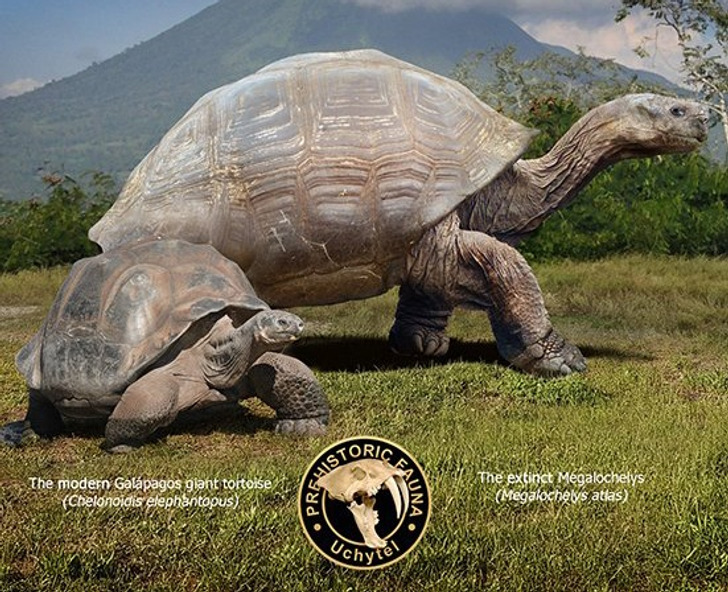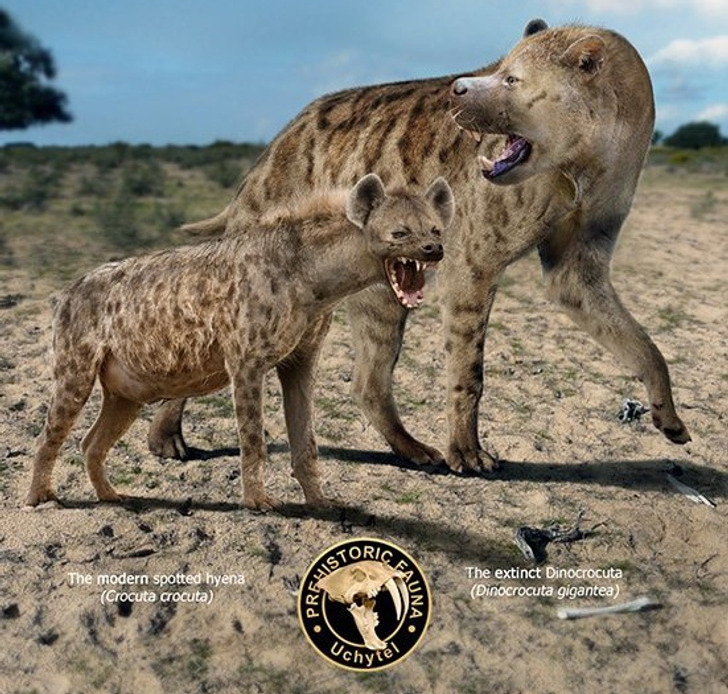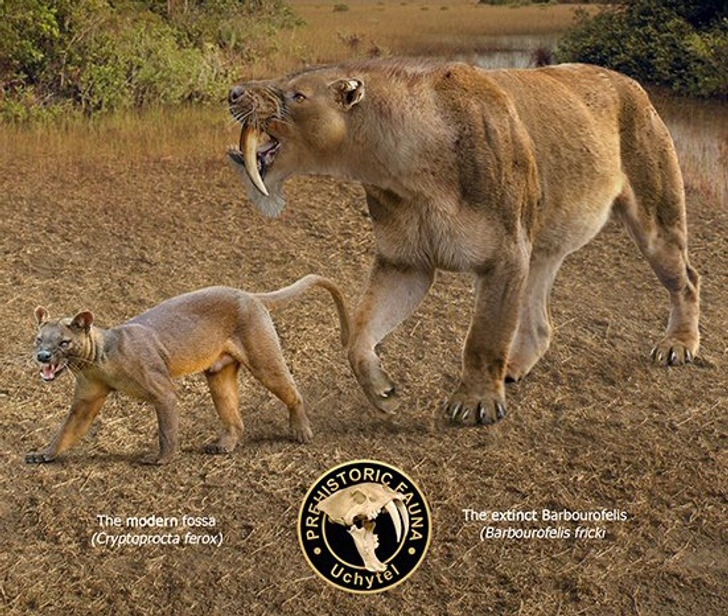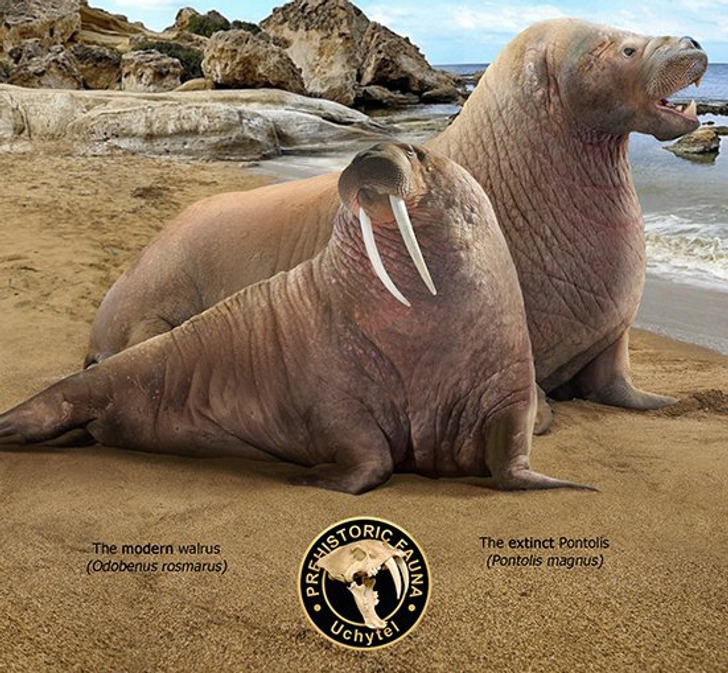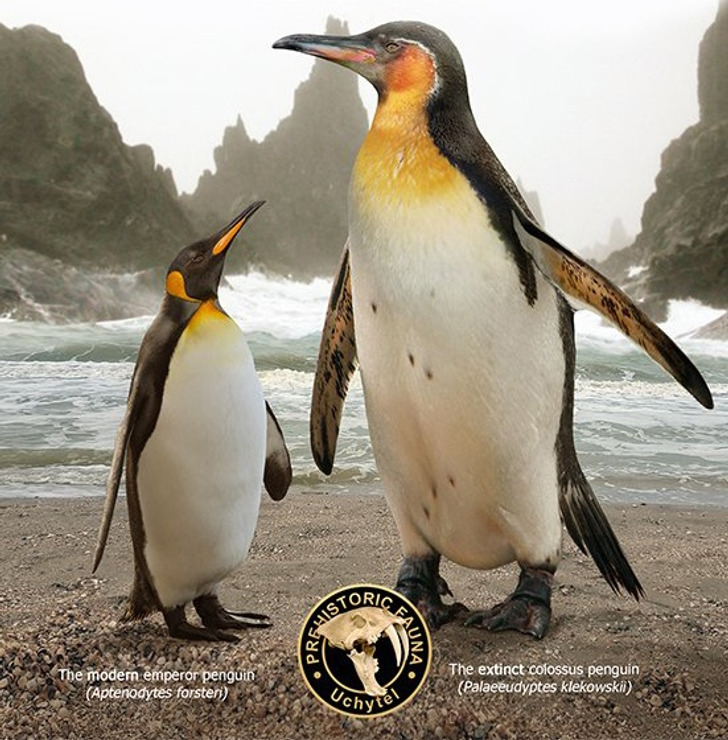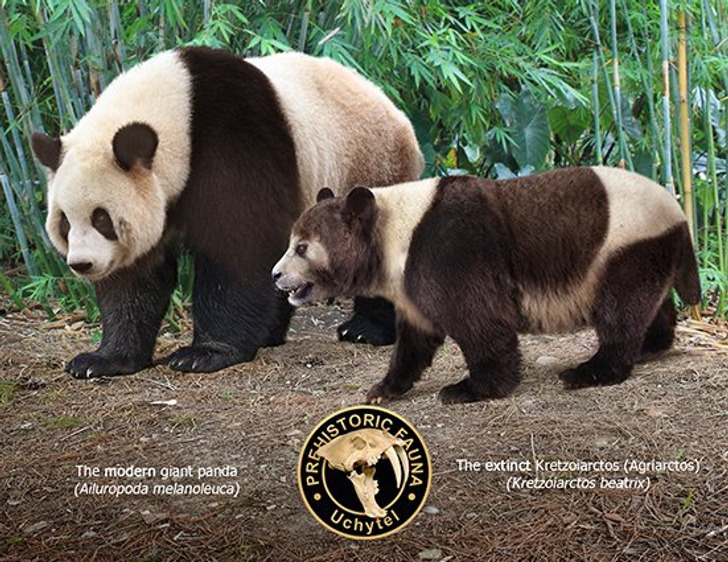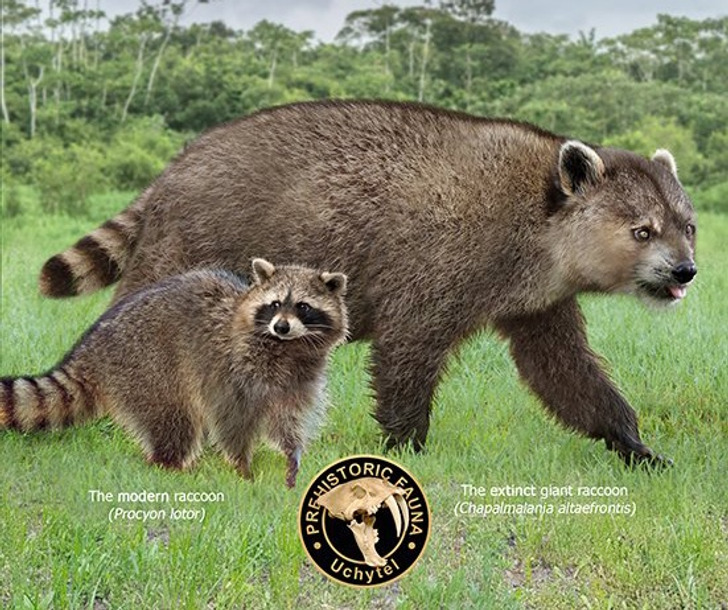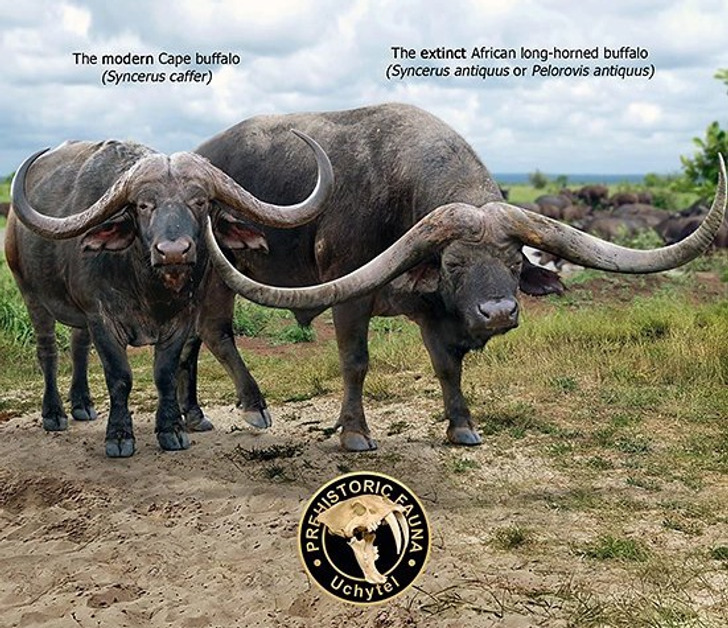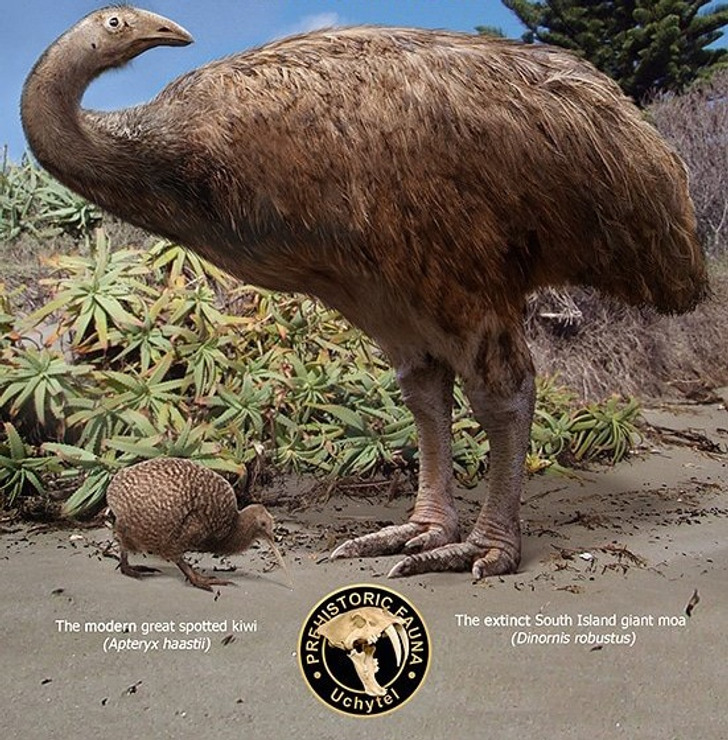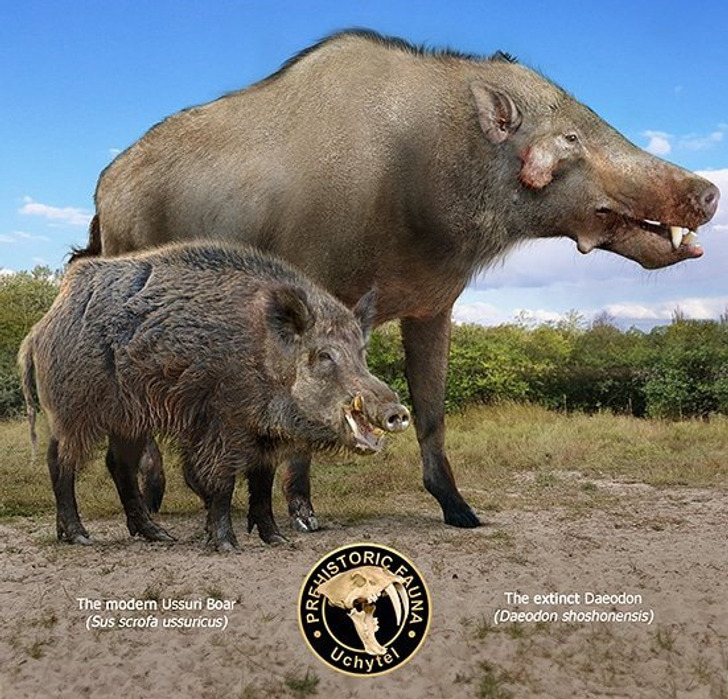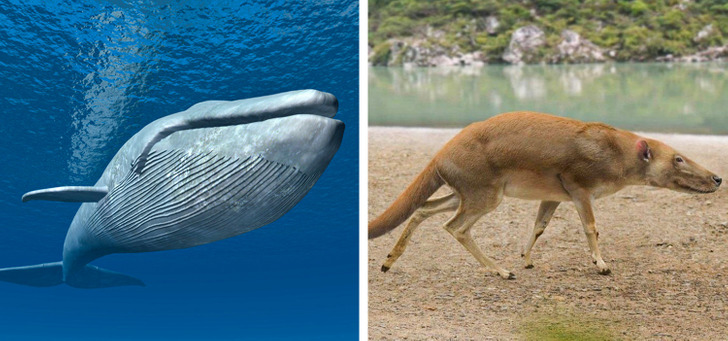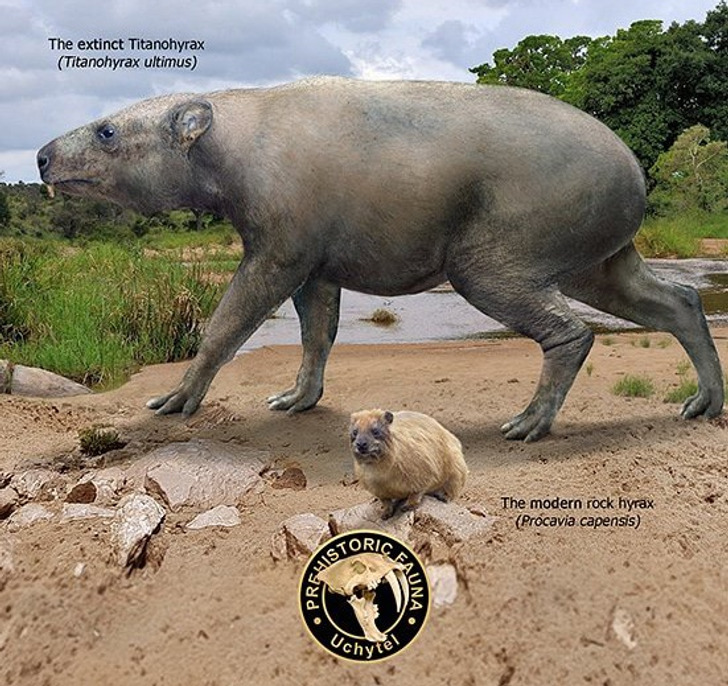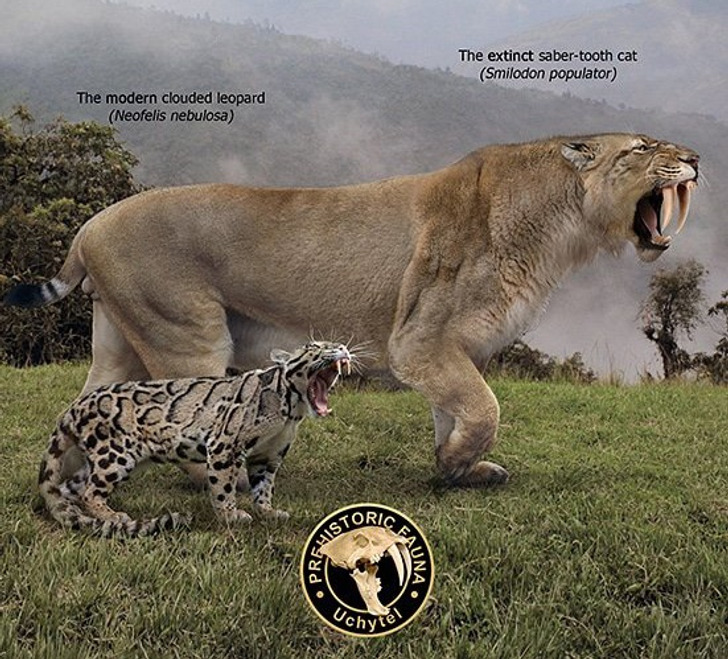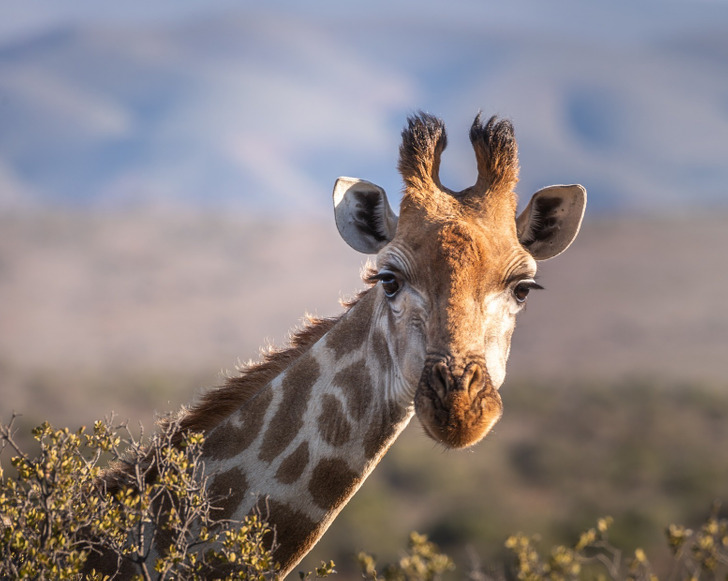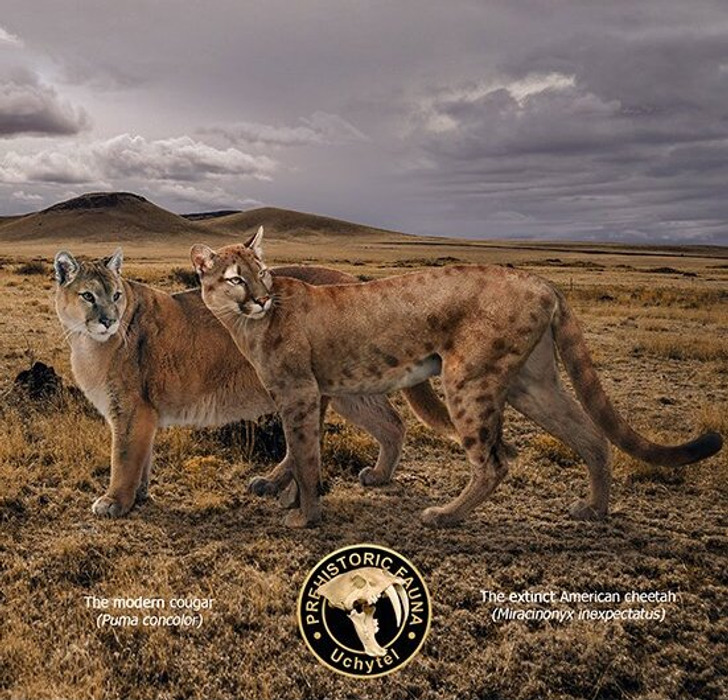16 Animals That Changed Drastically Through Evolution
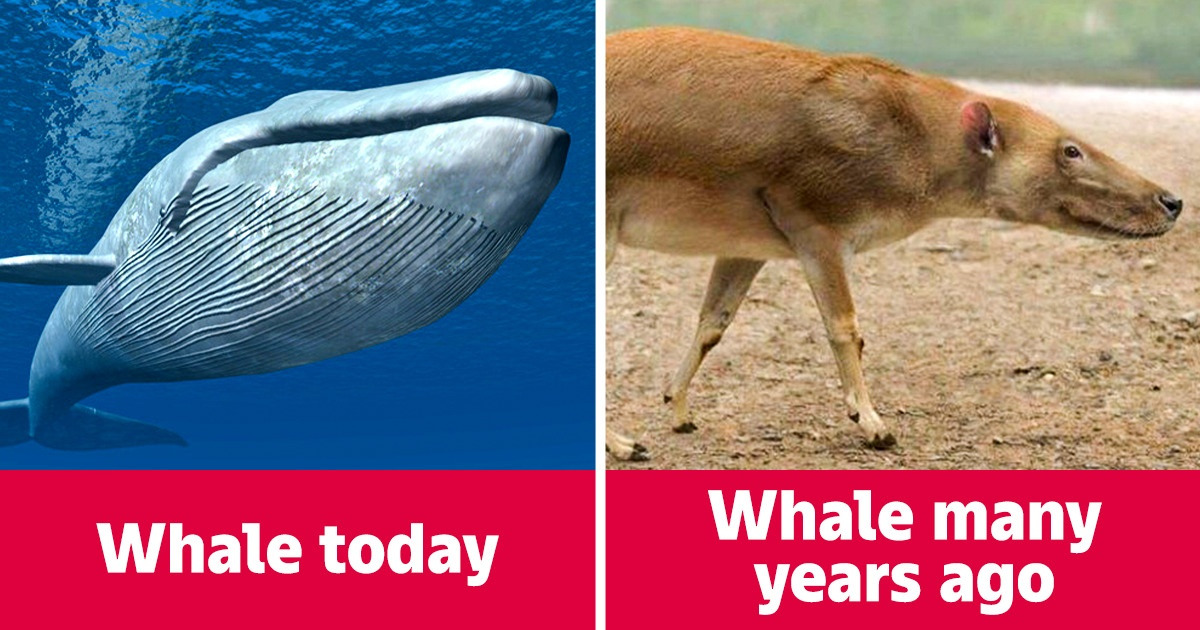
By training and being a naturalist at heart, Roman Uchytel’s drawings bring creatures that roamed our planet hundreds of thousands of years ago to life. His project, Prehistoric Fauna, is one of the first sources dedicated solely to the reconstruction of little-known prehistoric animals other than dinosaurs, becoming a guide to discovering the wonders of our past.
A giant Galapagos tortoise with the extinct Megalochelys atlas
When it comes to prehistoric animals, size matters. At over 2 meters long and weighing approximately 1000 kg to 3000 kg, The M. Atlas was the largest land tortoise in history and was commonly compared to the size of a Volkswagen Beetle car.
These species are considered to be herbivorous and make the giant Galapagos tortoise (the largest species today) look like a small toy.
A modern hyena next to the extinct Dinocrocuta
Dinocrocuta fossils can be found in Africa and Eurasia. At 2.1 m long, 120 cm high, and weighing up to 250 kg, it was the largest hyena variety ever found.
Today’s fossa compared to its ancestor, the Barbourofelis
The Barbourofelis fricki reached the size of a modern lion but had a heavier weight due to its strong physical parameters. It is said that it looked like a cross between a lion and a bear. For its part, the modern fossa is approximately 70 cm-80 cm long, weighing 6.2 kg-8.6 kg for males and 5.5 kg-6.8 kg for females.
The modern walrus and its ancestor, Pontolis magnus
Without the characteristic tusks of its present-day relative, the extinct Pontolis magnus has a different structure than modern walruses. Approximately 11 to 5 million years ago, it inhabited marine and coastal areas of present-day California and Oregon.
A modern penguin and the colossus penguin
Standing more than 2 meters tall and weighing more than 115 kg, the emperor penguin’s ancestor was taller than a human being. At least that is what studies of fossils that are more than 37 million years old show. By comparison, the emperor penguin, the largest species of these waterfowl today, is about 1.1 meters tall and weighs less than 50 kg.
The modern giant panda and its ancestor
In 2012, fossils were found that demonstrated a new fact about the Chinese giant panda: its ancestor is not of oriental origin. This has generated a debate about the origin of the panda’s lineage among paleontologists and biologists. Kretzoiarctos beatrix, the only species of the extinct panda genus, roamed the Iberian Peninsula. It is estimated that the size of this animal was considerably smaller than its modern version.
The modern raccoon and its giant ancestor
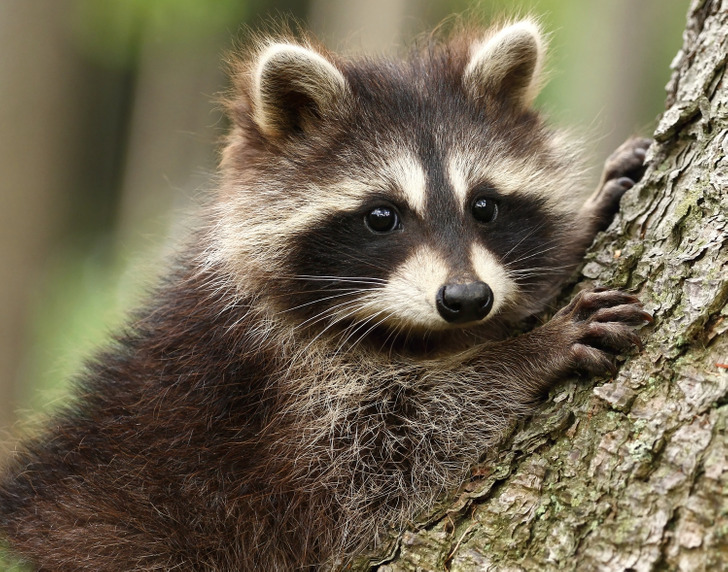
Today, for many people, the raccoon is a cute and friendly animal that even children are allowed to play with. But its ancestor was not cute at all, but a bully the size of a bear.
Because of its size and bone structure, paleontologists and biologists thought that the Chapalmalania was a species of bear. It would reach 1.3 m in length, 70 cm in height, and 20 kg-80 kg. It also is an ancestor of raccoons and lived in South America. Its size is comparable to that of the American black bear. Today’s average raccoons are about 25 cm long.
The modern buffalo and its ancestor
With an appearance very similar to its descendant, the Pelorovis walked the face of the Earth 2.5 million years ago. It is known to be one of the largest bovines that ever lived, weighing between 1,200 kg and 2,000 kg. The core of its characteristic horns measured approximately one meter each, which means that by increasing the keratin layer, they could reach twice that size.
The modern kiwi and its giant ancestor
The South Island Giant Moa lived in the southern part of New Zealand and were good runners who defended themselves by kicking. It is considered one of the possible ancestors of the kiwi. However, contrary to its descendant (modern female kiwis measure approximately 45 cm and weigh about 3.3 kg), the stature of these animals reached 3.5 meters and weighed about 350 kg, so it is considered one of the largest known birds.
It is assumed that this species disappeared after being hunted by the Maori aboriginal people.
A modern wild boar with its ancestor, Daeodon
The “terrible tooth” (the meaning of the name, Daeodon) walked on the Earth’s surface 29-19 million years ago in North America. It was 3 meters long and weighed up to 1000 kg, much more than its current descendants, which weigh between 68 kg and 100 kg. Today, wild boars are considered a tremendously adaptable species, capable of feeding on almost anything, and they’re excellent runners and swimmers.
The modern blue whale and the extinct Indohyus major
Although it’s been known that whales are descended from land animals, the missing link in this chain was yet to be found until paleontologists discovered fossils of the Indohyus.
This animal was about the size of a cat or raccoon and had an appearance similar to that of a deer. It is estimated that 48 million years ago, this animal hid in the water to escape predators. In addition, it preferred a herbivorous diet, which contradicts the belief that cetaceans entered the waters in search of food.
The extinct Titanohyrax ultimus compared to the modern Rock hyrax
The Rock hyrax is the size of a hare and is an ancestor of the elephant. The Titanohyrax was a herbivore for which not much information is available due to the scarcity of fossils. It is estimated that its extinction was due to competition for resources and food.
The clouded leopard and saber-toothed leopard
The saber-toothed leopard is a feline recognizable by its characteristic canine teeth that measured approximately 20 cm. Their jaws could open at a 90º angle, which some paleontologists estimate made their teeth weaker than today’s cats. It is no surprise then that their descendants did not maintain those impressive canines.
Another key difference is the size of the animals. It is estimated that the sabertooth could weigh up to 270 kg, while the clouded leopard, one of its descendants, weighs a maximum of 65 kg.
The modern giraffe with the Sivatherium
One of the examples given in classes on evolution is the change in giraffes. These animals went from having stout but short necks to their modern elongated versions.
This is why, if someone were to see the Sivatherium, it would be difficult to identify it as a relative of giraffes. At about 2.8 meters tall, this mammal lived more than 8,000 years ago. Its appearance was similar to a mixture of deer, antelope, giraffes, and other animals.
The modern cougar and Miracinonyx
The modern western long-beaked echidna with its ancestor
It may seem that the echidna has not changed much over the centuries. But its ancestor was about 1 m long and probably weighed about 30 kg. This makes it the largest monotreme known to have ever lived. The extinct animal had longer and straighter legs than its descendants. This was necessary to remain agile and fast in dense forests.
Thanks to projects like Prehistoric Fauna, we can learn about prehistoric animal species that are not very widespread. What do you think of this initiative? How do you think animals and humans could change and look in the future?
